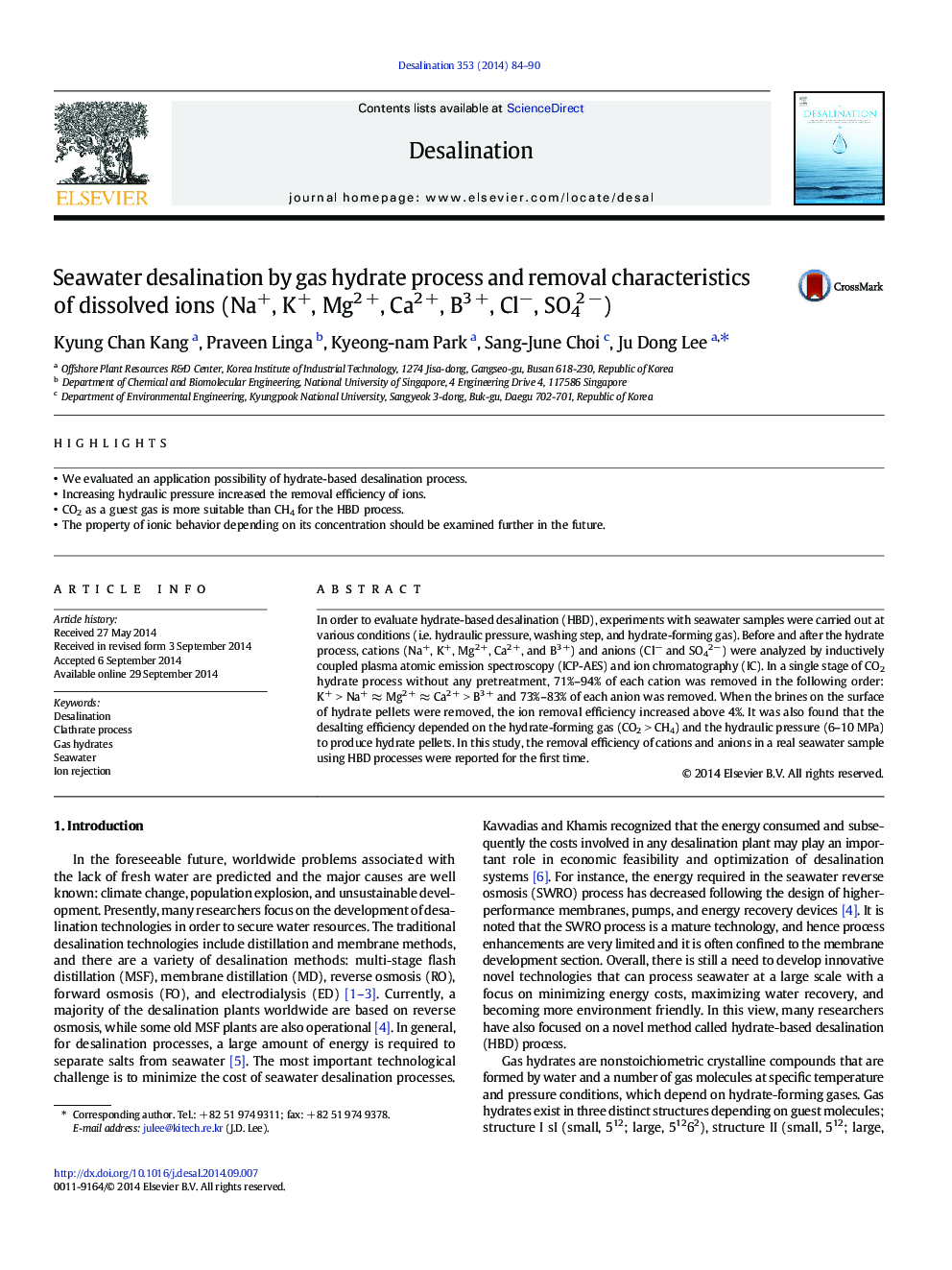| Article ID | Journal | Published Year | Pages | File Type |
|---|---|---|---|---|
| 623275 | Desalination | 2014 | 7 Pages |
•We evaluated an application possibility of hydrate-based desalination process.•Increasing hydraulic pressure increased the removal efficiency of ions.•CO2 as a guest gas is more suitable than CH4 for the HBD process.•The property of ionic behavior depending on its concentration should be examined further in the future.
In order to evaluate hydrate-based desalination (HBD), experiments with seawater samples were carried out at various conditions (i.e. hydraulic pressure, washing step, and hydrate-forming gas). Before and after the hydrate process, cations (Na+, K+, Mg2 +, Ca2 +, and B3 +) and anions (Cl− and SO42 −) were analyzed by inductively coupled plasma atomic emission spectroscopy (ICP-AES) and ion chromatography (IC). In a single stage of CO2 hydrate process without any pretreatment, 71%–94% of each cation was removed in the following order: K+ > Na+ ≈ Mg2 + ≈ Ca2 + > B3 + and 73%–83% of each anion was removed. When the brines on the surface of hydrate pellets were removed, the ion removal efficiency increased above 4%. It was also found that the desalting efficiency depended on the hydrate-forming gas (CO2 > CH4) and the hydraulic pressure (6–10 MPa) to produce hydrate pellets. In this study, the removal efficiency of cations and anions in a real seawater sample using HBD processes were reported for the first time.
